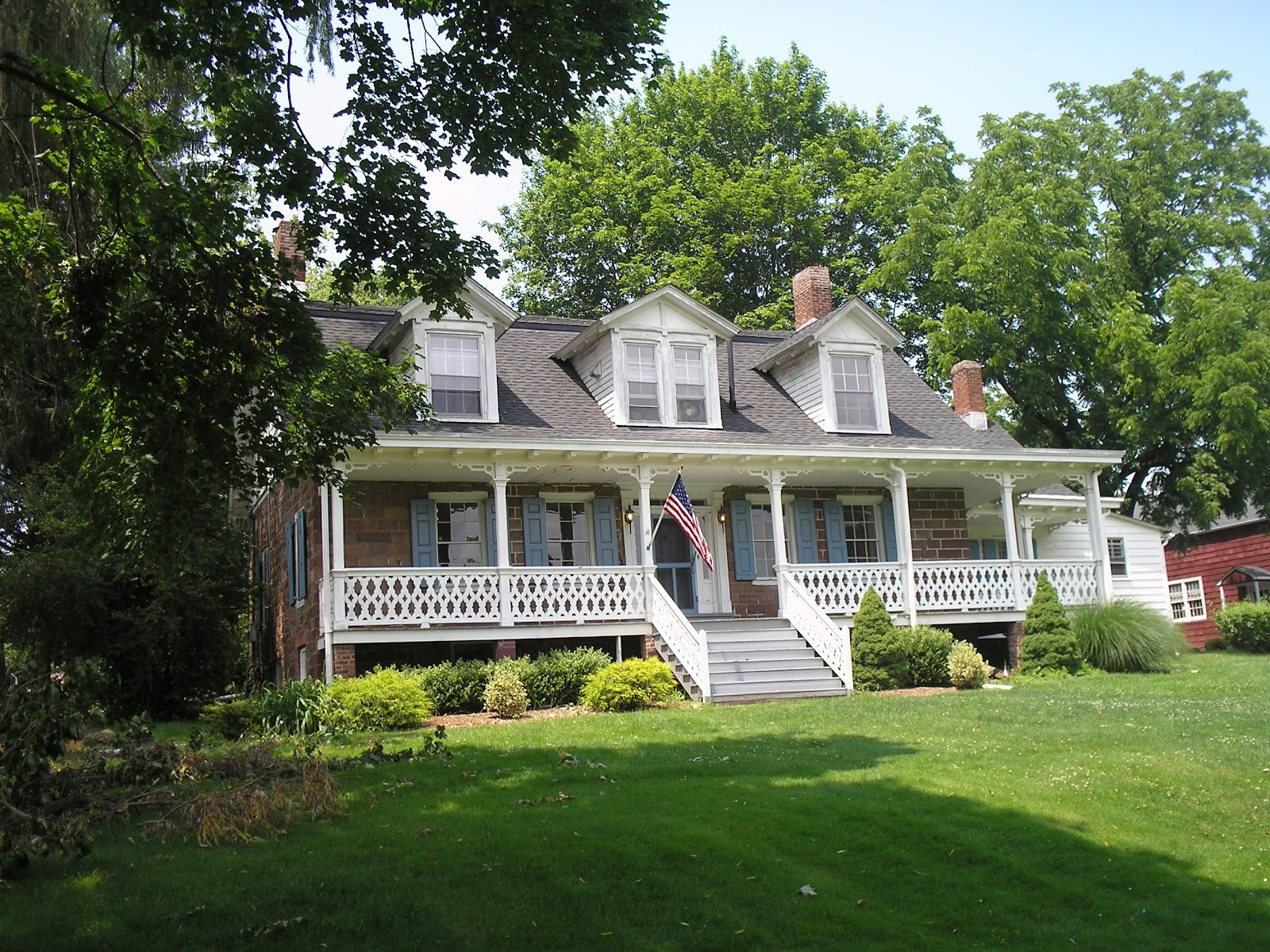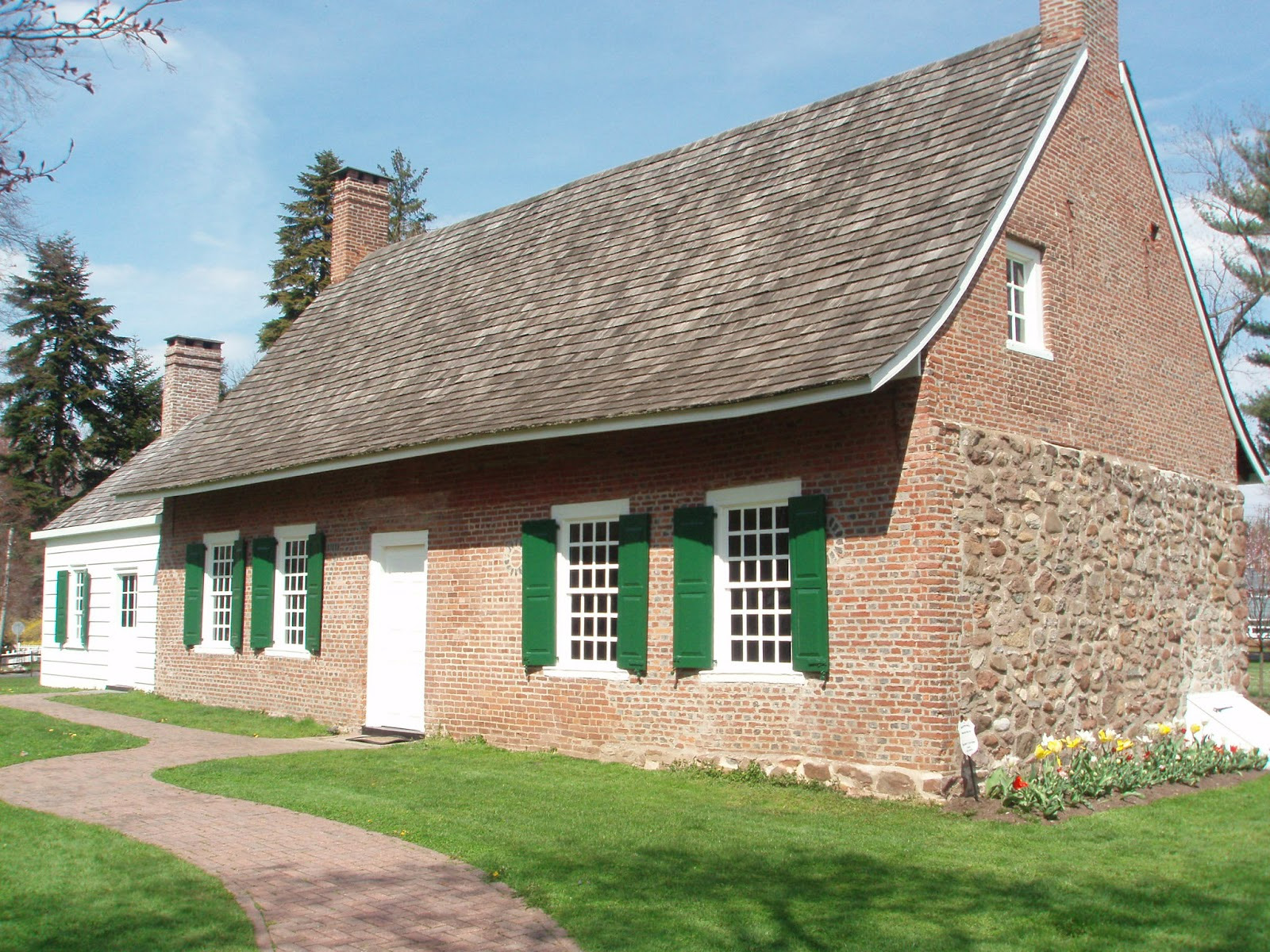Revolutionary Family Adventures
Bring the family along to explore the history of the American Revolution throughout the Hudson Valley on the Bridge-to-Bridge Tour. Visit historic homes, battlefields, museums and more for hands-on experiences and one-of-a-kind experiences.
Mid-Hudson Valley
Dutchess, Orange, Ulster

1. Museum Village
Through educational programs, hands-on-exhibits and special events, Museum Village is dedicated to exploring and interpreting the late 19th-century in small town America. Visit the Log Cabin, which dates back to the second half of the 18th century. View artifacts including oil and kerosene lamps, clothing, appliances and school supplies. Learn about the history of rural education and experience what it was like to spend time in a one room schoolhouse.
Location: 1010 NY-17M, Monroe

2. Fort Montgomery State Historic Site
Explore the rich history of the American Revolution at Fort Montgomery State Historic Site. Located along the Hudson River, this site offers stunning views and a captivating journey through one of the war’s critical battles. Visitors can tour the ruins of the fort, hike scenic trails, and view engaging exhibits in the visitor center detailing the events of 1777. Perfect for history enthusiasts, this site brings the past to life with reenactments and educational programs.
Location: 690 Route 9W, Fort Montgomery

3. Washington's Headquarters State Historic Site
Visit the nation's first publicly owned historic site and tour the rooms where American history was made. In the critical months that General George Washington spent at Newburgh, he made some of his most important contributions to shaping the American republic. It was here that Washington rejected the idea of an American monarchy; ended the Newburgh Conspiracy, preventing potential military control of the government; created the Badge of Military Merit, forerunner of the Purple Heart; and circulated an influential letter to State Governors outlining the key principals he felt necessary for the new republic.
Location: 84 Liberty Street, Newburgh

4. Brinckerhoff Inn
This fully restored mansion, which remained in the Brinckerhoff family for nearly 300 years, has provided travelers with luxurious accommodations for centuries. For several weeks in the fall of 1778, the Marquis de Lafayette recuperated from an illness in the second-floor bedroom of the Brinckerhoff home and was nursed back to health. That room is available and named after the Marquis. Derick Brinckerhoff, who constructed the mansion around the family’s original homestead built by his father, was the Colonel of the Second Regiment of Dutchess County Militia during the Revolutionary War and an eight-term member of the State Assembly.
Location: 1577 Route 52, Fishkill

5. The First Reformed Dutch Church of Fishkill
The Reverend Petrus Vas of Kingston started two Dutch Reformed Churches in 1716, one in Poughkeepsie and one in Fishkill. The Fishkill church is still in operation and hosts services every Sunday. Its original 1731 building was a meeting place for the New York Provincial Congress and was used as a prison by the Continental Army during the Revolutionary War. Among those imprisoned there was local Patriot spy Enoch Crosby, who had been recruited by John Jay to be one of the rebels’ first spies. Crosby repeatedly infiltrated British loyalist groups and was subsequently “arrested” by the Patriots along with the true loyalists whose trust he had gained; each time, in order to protect his true identity, Crosby was later allowed to “escape.”
Location: 1153 Main Street, Fishkill

6. Upper Landing Park
Local businessman Martin Hoffman purchased the riverfront property now known as Upper Landing Park in 1755 and made several important additions to the property, including a mill and a dock. The property was bought and sold several times before it was purchased by John Schenck Jr. in 1772. Schenck served as a commissary officer in the Continental Army during the Revolutionary War; his job was to store and distribute supplies for the soldiers. The dock at Schenck's Landing, as it came to be known, became the main supply depot in Poughkeepsie. Nowadays, Upper Landing Park offers beautiful views of the Hudson River and the surrounding highlands. Visitors can ride the free, glass-enclosed elevator up 212 feet to the deck of the Walkway Over the Hudson, the world's longest elevated pedestrian walkway.
Location: 83 North Water Street, Poughkeepsie

7. Senate House State Historic Site
Built in 1676, the building served as a home, store, and, in 1777, as the Senate chamber.
During the month the Senate met here, it concentrated on establishing rules for the body, raising money and supplies for the militia, and responding to a message sent by Governor Clinton regarding the war and the newly formed government.
Location: 296 Fair Street, Kingston

8. Rough Draft
A bookstore, cafe and bar located in one of the four original stone buildings that make up Kingston, NY's Historic Four Corners in the Historic Stockade District.
Location: 82 John Street, Kingston

9. Mount Gulian Historic Site
Built around 1730, the Verplank family homestead sits on 44 acres with a 1740's Dutch barn and restored garden. The site served as the Revolutionary War Headquarters of Major General Friedrich Von Steuben whose European training methods were vital to George Washington's inexperienced soldiers. In 1783, both men helped form America's first fraternal veteran's organization, the Society of the Cincinnati. Roughly 8,000 years of history is documented here dating back to the indigenous people who inhabited the land. Special events and programs for children happen throughout the year.
Location: 145 Sterling Street, Beacon
Lower Hudson Valley
Putnam, Rockland, Westchester

10. Boscobel House & Gardens
Built between 1804 and 1808, Boscobel was originally the dream house of wealthy Loyalist, States Dykman who worked in the British Army's Quartermaster Corps for most of the American Revolutionary War, keeping the accounts of various quartermasters. Boscobel’s interiors display one of the finest collections of decorative arts and New York furniture from the Federal period.
Overlooking Constitution Marsh toward the U.S. Military Academy at West Point, Boscobel’s landscape showcases dramatic views of the Hudson River. See remnants of the “Great Chain” that were used as a naval tactic to prevent British vessels from sailing up the Hudson River during the war.
Location: 1123 Old Albany Post Road, Garrison

11. Brick Church Cemetery
Dating back to 1794, the Brick Church Cemetery is listed in the U.S. National Register of Historic Places and is the final resting place of many historic figures, including Revolutionary War veterans and Daniel Carter Beard, the first National Commissioner of the Boy Scouts of America. The historic church was built in 1778.
Location: 221 Brick Church Road, Spring Valley

12. The Manse Historical Marker
Constructed in 1726, the Manse was the home of Domine Samuel Verbryck who lived there during the American Revolution. A friend of George Washington, Verbryck also founded Rutgers College in New Jersey.
Location: 32 Old Tappan Road, Tappan

13. DeWint House & Museum
George Washington's temporary headquarters in Tappan, NY on four separate occasions during the American Revolutionary War. Built in 1700, the stone and brick house was owned by Patriot Johannes DeWint during the Revolution and is the oldest surviving building in Rockland County. During his stay in 1783, Washington entertained British General Sir Guy Carleton to negotiate the vanquished army’s evacuation of New York City. Today, the house’s two first-floor rooms have been restored and furnished to reflect the period of Washington’s occupancy. An adjacent 19th-century carriage house contains displays of artifacts uncovered at the site during archaeological digs, as well as items related to Washington, André, and Arnold.
Location: 20 Livingston Avenue, Tappan

14. Stony Point Battlefield State Historic Site
The Stony Point Battlefield was the site of a key American victory during the war. On July 16, 1779. American forces led by Brigadier General “Mad” Anthony Wayne launched a daring nighttime assault on British fortifications, recapturing the strategic position. This victory disrupted British operation along the Hudson River. The site features a museum, which offers exhibits on the battle and the Stony Point Lighthouse, as well as interpretive programs, such as reenactments highlighting 18th century military life, cannon and musket firings, cooking and blacksmith demonstrations, and children's activities.
Location: 44 Battlefield Road, Stony Point

15. Van Cortlandt Manor
Experience the domestic life of a patriot family living in the years just after the American Revolution - the New Nation period, when the political and social aftershocks of the Revolutionary War were experienced by a community that included enslaved black residents as well as wealthy and working-class whites. The Van Cortlandts were one of New York's most prominent families, who influenced pressing political issues of the time, including Federalist and Anti-Federalist debates over the drafting of the Constitution.
Location: 525 South Riverside Avenue, Croton-on-Hudson

16. John Jay Homestead
Experience American History at the home of Founding Father John Jay and 5 successive generations of the Jay family. Do you want to learn, from a first-hand source, about the birth of our nation? Founding Father, John Jay, can enlighten you. Do the origins and changes of the antislavery movement pique your interest? You will gain perspective from John Jay’s son and grandson who were at the forefront of the movement. Discover the stories of the slaves who lived at John Jay Homestead before the family championed the abolition cause.
Location: 400 Jay Street, Katonah
Take A Revolutionary Tour
Explore the history, places & personalities that built a nation.
